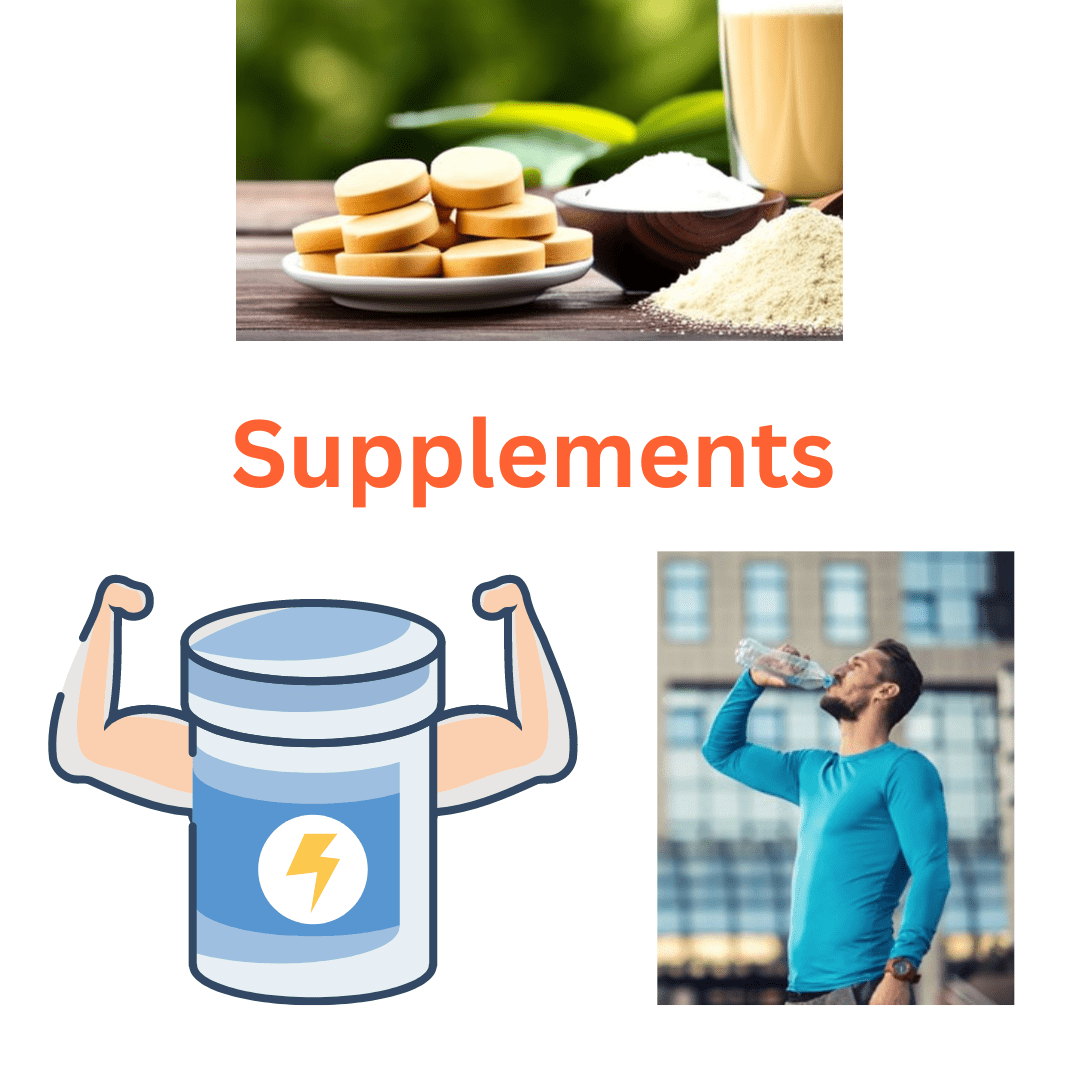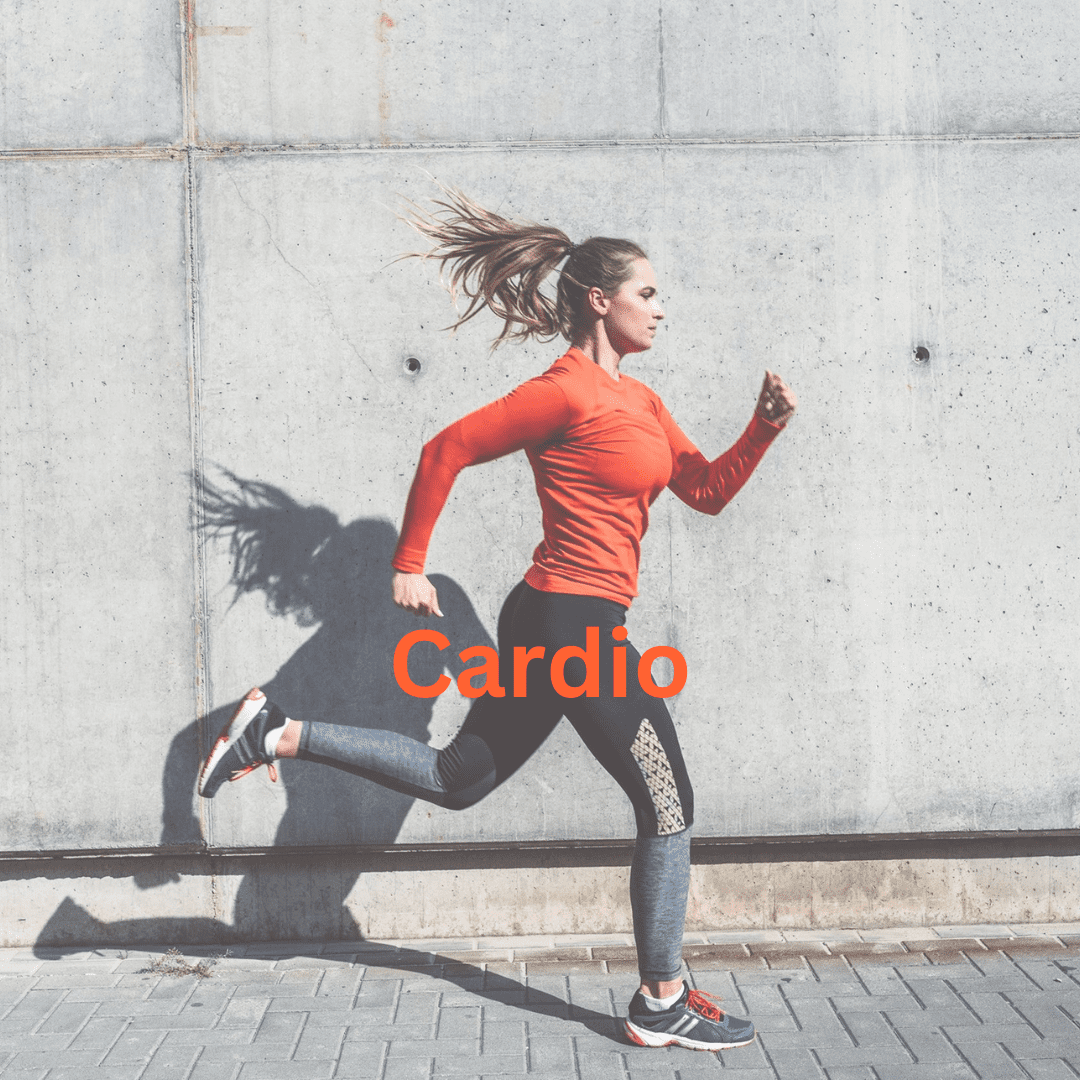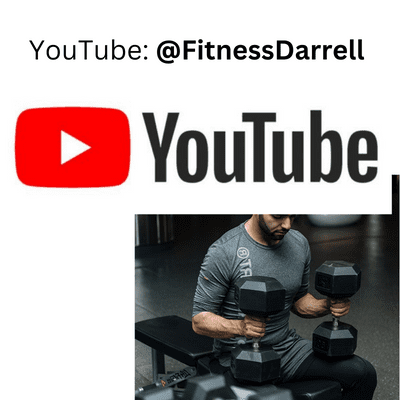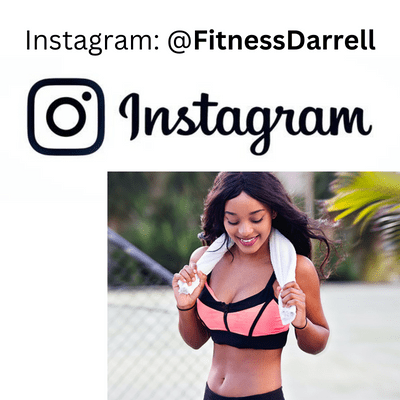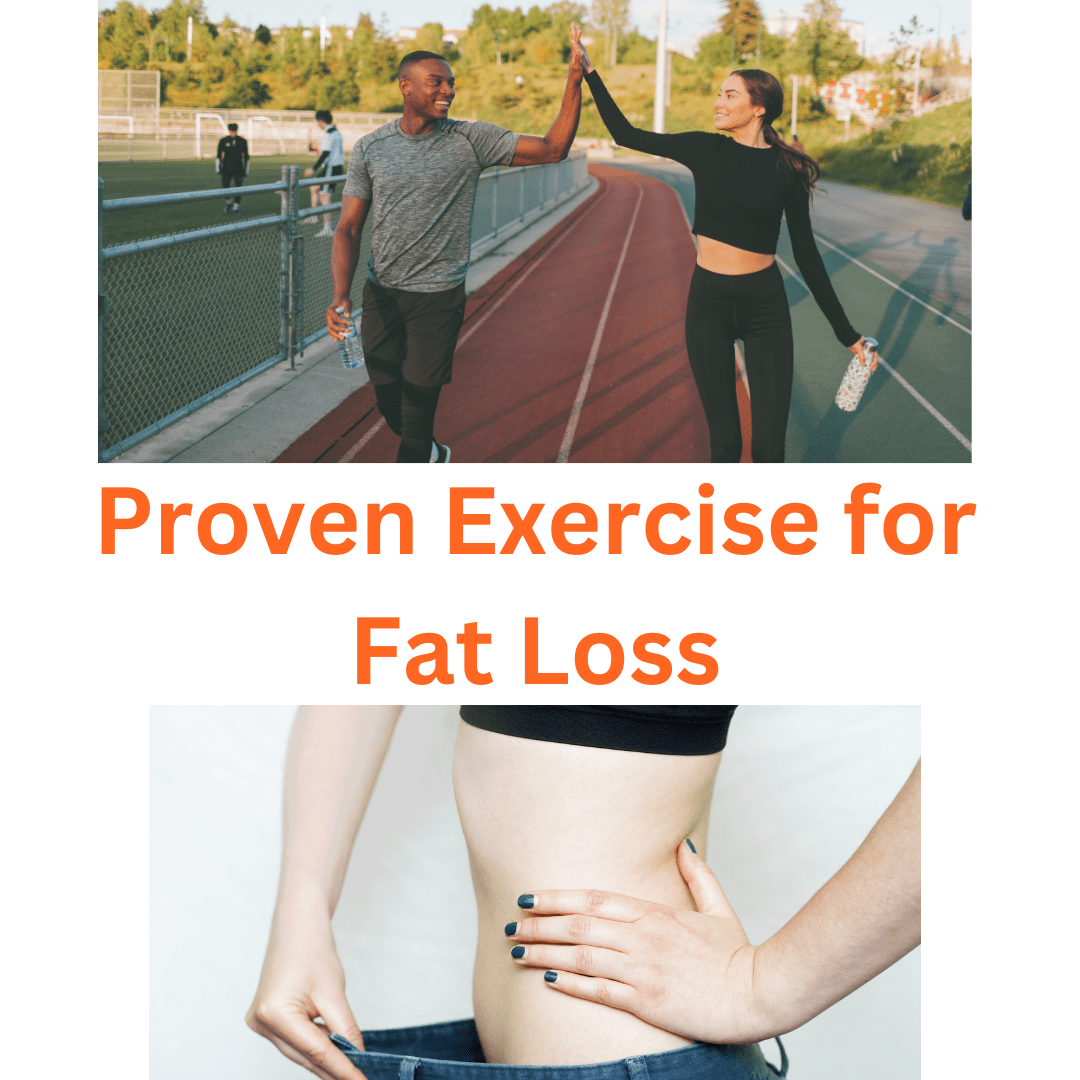
Does exercise really work to lose fat? Proven Exercise for Fat Loss
Does exercise really work to lose fat? Several studies have proven exercise for fat loss works very effectively and leads to weight loss in overweight people. When exercise is added to doing changes to diet, an additional 2lbs was lost vs just dieting alone. The review also found that resistance training preserved lean mass during weight loss.
Exercising and being active is a key foundation for good metabolic health, while inactivity raises risks for obesity and related diseases like diabetes, excess inflammation, and heart disease (per a 2017 study).
Another study found that exercise boosts the activity of certain genes that control our body’s internal clock (circadian rhythms). This can profoundly impact the way we gain or lose weight and fat.
Weight training burns fat according to research. A study of the molecular underpinnings of resistance exercise found that weight training may shrink fat by changing the inner workings of cells. The study found that muscle cells release a cascade of hormones and other proteins after exercise. This can affect fat cells. The study also found that muscle cells pack microRNA that retard hypertrophy into vesicles and post them to neighboring fat cells, which then allows the muscles to grow.
Exercise can also increase the number of brown fat cells, which burn fat instead of storing it. In an article published in Harvard Medical School, A 2009 study found that humans have both white fat cells and brown fat cells. The study found that brown fat cells burn fat, while white fat cells store fat. The research has further proven exercise for fat loss works one way by increasing the number of brown fat cells.
So what can you do? What’s an example of proven exercise for fat loss?
There are a lot that work and have been studied. In this article, we’ll expertly discuss how to implement the best exercises for fat loss according to science:
- Beginning / Getting Started – Cycling, Swimming, Walking, Yoga, and Pilates
- Adding intensity – Jogging, Intervals, and how to add intensity to cycling, swimming, walking, yoga, and pilates.
- Intermediate & Advanced – Running, high intensity interval training, and resistance training
Beginning / Getting Started
Starting an exercise routine when you are overweight can be a daunting task, but it is an essential step towards achieving a healthy and active lifestyle. When beginning an exercise program, you need to consider emotional, physical, and environmental factors. In this article, we will discuss how to get started with exercise for someone who is overweight, addressing these concerns and why it is important to start with lower intensity exercises first.
Emotional Concerns
For many people, their weight can cause emotional barriers that prevent them from exercising. They may feel self-conscious, embarrassed, or worried about being judged. To overcome these concerns, it is important to remember that everyone starts somewhere, and that it is essential to focus on your health and well-being.
Here are some additional tips that may help overcome anxiety of starting a new exercise program:
1. Start slowly and get comfortable with your new routine. Get a tour of the facility and help understanding how to use all of the machines. Hire a trainer to help you get started.
2. Identify what you enjoy doing. Exercise includes a wide range of activities that boost your activity level to help you feel better. Any physical activity that gets you off the couch and moving can help, such as gardening, walking around the block, or engaging in other less intense activities.
3. Try foam rolling to reduce muscle soreness after a workout.
4. Take a few minutes to cool down and stretch after your workout to prevent soreness and injuries.
5. Make exercise a priority and find free time in your day for activities that are important. Short 5-, 10-, or 15-minute bursts of activity can prove very effective.
6. Pick an activity that you enjoy, such as walking, dancing, yoga, or swimming, to increase your fitness level while decreasing your stress.
Physical Considerations
It is important to consult with your doctor before beginning any exercise program, especially if you have any underlying health conditions. When starting an exercise routine, it is essential to begin with low-intensity activities such as walking, swimming, or cycling. This will help you build endurance, strength, and flexibility gradually.
Another consideration is to start building abs and back muscle strength through flexibility and stability exercises. That will set yourself up for success in the future and prevent injuries.
Environmental Considerations
Finding a comfortable and safe space to exercise is important. If you feel more comfortable exercising in a private setting, consider purchasing workout equipment for your home. If you prefer exercising outdoors, consider going for a walk or jog in a park or finding a local gym that caters to your needs.
Starting with Lower Intensity Exercises
Starting with low-intensity exercises is crucial when you are overweight. This is because your body is not used to regular physical activity, and you can risk injury if you start with high-intensity exercises. Beginning with low-intensity exercises allows you to build endurance, strength, and flexibility gradually, and this can help you avoid injury and fatigue.
Cycling
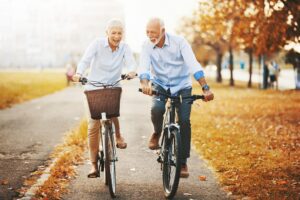
Both cycling and swimming are probably the best exercises to start with because it is so good on your joints. Plus, there is much more forgiveness to prevent you from accidentally over-doing it. They are great activities as you increase the intensity. Furthermore, athletes do these all the time to cross-train and reduce risk of injury.
Regular cycling not only aids in weight loss but also improves overall fitness, increases insulin sensitivity, and lowers the risk of heart disease, cancer, and death, according to studies.
If you weigh 155 pounds (70 kg), cycling for 30 minutes at a moderate pace on a stationary bike or bicycle can burn around 252 or 288 calories respectively, according to Harvard Health.
Swimming

If there were ever a perfect exercise that gets huge results without the downsides, swimming is one of the best proven exercises for fat loss.
Twenty-four middle-aged women who swam for 60 minutes three times a week for 3 months saw significant improvements in their health. Health improvements included lower heart disease risk factors, including high total cholesterol and blood triglycerides. Body fat dropped a massive amount in the swimming group from 29.8% to 26.9% on average–a -2.9% decrease! The control group increased 1.4% in this time period. Flexibility measurement increased in the swimming group 17.2% whereas the control group was flat -0.3%.
If you’re new to swimming, here are some tips to help you get started:
- Start Slow: If you’re not used to swimming, start with short sessions and gradually increase your time in the pool.
- Take Lessons: Consider taking swimming lessons from a certified instructor. They can help you learn proper technique and build your confidence in the water.
- Find a Pool: Find a public pool or gym with a pool that you can access regularly. Make sure the pool has a lifeguard on duty and that you’re comfortable with the depth and temperature.
- Get the Right Gear: Invest in a comfortable and properly fitting swimsuit, goggles, and a swim cap. These items will help you feel more comfortable and confident in the water.
- Warm Up: Before jumping in the pool, start with a warm-up on land. Stretch your arms, shoulders, and legs to get your body ready for exercise.
- Start with Basic Strokes: Start with the basic strokes like freestyle, backstroke, and breaststroke. As you become more comfortable, you can try more advanced strokes like butterfly.
- Take Breaks: Remember to take breaks when you need to. Swimming can be a great workout, but it’s also important to listen to your body and rest when you need to.
Remember, swimming is a low-impact exercise that is great for people of all ages and fitness levels. With these tips, you can get started with swimming and enjoy the many health benefits it has to offer.
Walking
Walking is a proven exercise for fat loss that is convenient, easy, and beginner-friendly. It is a low-impact exercise that is gentle on your joints. Walking can be easily incorporated into your daily routine, such as taking the stairs, walking during lunch breaks, or walking your dog.
Science-wise, there is a lot of research done on this topic. It is absolutely a proven exercise for fat loss. Twenty obese women who walked for 50-70 minutes three times per week lost an average of 1.5% body fat and 1.1 inches (2.8 cm) off their waistline in a 12-week study.
Walking at a moderate pace of 4 mph (6.4 km/h) burns approximately 175 calories per 30 minutes for a person weighing 155 pounds (70 kg) (from Harvard Health).
Yoga
One great aspect of yoga that makes it a really good exercise to start doing is that you develop really strong core muscles in your abs and back. If you think about it, even the word “core” shows how foundational it is to other bodily movements.
Yoga is popular for health benefits and weight loss. In North America and Europe, yoga includes body postures, breathing exercises, and meditation. More than 16 million people in the US practiced yoga in 2008, but in 2022 that number jumped to ~36 million people. 80% people have been found to go to improve their health. One of the top health reasons was to lose weight (according to a study).
In a 12-week study of 60 obese women, those who did two 90-minute yoga sessions weekly had an average reduction of 1.5 inches (3.8 cm) in waist circumference compared to the control group. The yoga group also lost 1.4% body fat while also increasing their % muscle mass .6%. So yoga is definitely a proven exercise for fat loss.
It is becoming more popular to feel anxiety in life and high stress, post-pandemic. As you can imagine, yoga helps in this regard too. A study found that you can learn mindfulness, which is key in dealing with anxiety, while also reducing stress.
It’s easy to get started. In addition to gyms, you can also get started by doing yoga videos found on YouTube.
Pilates
The Pilates exercise approach is popular among women. Fortunately, recent evidence shows its positive effects on body composition. In a 2017 study, 37 sedentary overweight and obese women aged 30 to 50 were randomly divided into Pilates and control groups. The Pilates group received 90-minute sessions, 3 times/week, for 8 weeks with gradual strength increase.
The Pilates group showed significant decreases in weight, BMI, fat percentage, waist, abdomen, and hip circumference after training. The control group increased in abdomen, body fat, weight and hip circumference. The study suggests Pilates can improve body composition in sedentary overweight and obese women.
In addition to being a proven exercise for fat loss, pilates also have benefits for mental health. Pilates has been shown to improve depression, mood, sleep quality, and quality of life in various populations (see 2018 review of studies).
Adding Intensity
VERY IMPORTANT: Don’t add intensity until you have flexibility, stability, and are able to do normal functional activities. When I got my American Council on Exercise Certified Personal Trainer license, this was covered very clearly. Why? Because you’ll be taking on increased risk of injuries (and potential burnout too). Funny enough, you don’t find this written about in fitness articles. So here you go–giving you quality value.
While there is some variation, generally-speaking, adding intensity increases the ability to burn more calories in a shorter period of time. This can increase your ability to burn fat or build muscle. Exercise benefits on fat loss include the calories burned while doing the activity, excess post-oxygen consumption (EPOC), improved gut microbiome and insulin function, and increased basal metabolic rate when muscle is increased.
Jogging
The amount of fat lost by jogging can vary depending on factors such as distance, intensity, and diet. According to a 2015 study in the Journal of Sports Medicine and Physical Fitness, runners who logged more than 3.1 miles per week while making targeted dietary changes lost an average of 12.3 pounds of fat mass over the course of a year. Those who ran less than 3.1 miles per week while watching their diet shed an average of 7.8 pounds of fat. So, by running more, people lost much more fat.
Make sure not to overdo it, especially if you are just starting out. By gradually increasing, you reduce chances of injury.
Intervals
You can apply intervals to nearly any type of sport or activity. One example is at the track where you walk the turns but run the straight-aways. Another example is in a pool where you do a freestyle sprint across the pool, but then the rest of the time do steady state swimming. Or in the case of cycling, you can do a brief sprint and then go back to a steady state cycling.
High Intensity Interval Training (or HIIT) is generally regarded as when training approaches your VO2 max at some point. This causes your body to increase its VO2 max (especially for beginners and intermediate HIIT exercises). But you also get a host of other benefits, like longer endurance and energy. Experts regard HIIT as one of the most effective exercises for fat loss if you are short on time.
Generally speaking, intervals are a more moderate intensity, whereas HIIT includes higher intensity and for longer periods of time. But the differences can be subtle.
Notably, people often find interval training enjoyable and its short time needed. When they do, they are more likely to make it a habit. A review of eight studies found that HIIT had positive enjoyment responses compared to moderate-intensity continuous training (MICT).
How to add intensity to other activities
- Rucking – one of the great benefits of walking is it can be done consistently to lose weight regardless of your current fitness level. When you add weight and walk, you continue to have a low risk of injury, but are able to burn much, much more calories (comparable to running). Note it also helps with body recomposition by strengthening leg muscles at the same time.
- Cycling – adding higher amounts of intervals and doing long periods of time going up hills (often found in spinning classes for an entire song).
- Swimming – adding swimming weights to increase drag/resistance.
- FITT-VP stands for Frequency, Intensity, Time, Type, Volume, and Progression. To increase intensity, often this includes adding more power to an activity (like weight moved in the same amount of time). Consider this when applying it to other activities.
Intermediate & Advanced
Running
An important thing to remember is that running is a plyometric exercise. Accordingly, it’s important to focus on good form, and running on a surface that is kind to your joints long-term. Ideally, this would be done on the sand, soft dirt, grass, or in water. If those aren’t options, running on a treadmill that has a thick belt is ok. Asphalt and concrete have the highest potential risk of injury out of all surfaces.
High Intensity Interval Training (HIIT)
HIIT and moderate intensity continuous training both are effective ways to lose fat, as studies have shown. Researchers in a study conducted a 12-week training intervention with 2 weekly sessions of HIIT and resistance training. During the study, they saw a decrease in subcutaneous and visceral fat deposits and an increase in muscle mass. So body composition improved notably despite no significant change in weight. People often tout HIIT because it saves time. Ultimately, the best one is the one you can consistently do (and find enjoyment).
In the case of cycling, you do an all out sprint for 20 sec. followed by 10 sec. of recovery–repeated 8 times (otherwise known as Tabata).
Doing “exercise snacks” by throwing in spontaneous HIIT through out the day can make a big impact on your health which can complement your regular exercise routine. Exercise snacks can be defined as “isolated bouts of vigorous exercise lasting ≤1 min that are performed multiple times throughout the day”.
Resistance Training
This is where it’s important to realize the goal is fat loss, not weight loss! By adding resistance training, you significantly improve more benefits than the most magical medical prescription could ever do and then some. You prevent yourself from being “skinny fat” and it results in you looking “toned”. Why? muscle is twice as heavy as fat but much less dense (and it helps your resting metabolic rate).
A 2016 study found that exercise training can improve body composition by reducing fat mass and increasing muscle mass. Their 12-week study showed a reduction in subcutaneous and visceral fat, along with increased muscle mass. That means the fat in your belly got smaller. Despite this, total body weight didn’t change significantly in participants who did HIIT and resistance training twice a week.
Research Shows Exercise is a Smart, Proven way to Lose Fat
- Exercise has been proven to be an effective way to lose fat, preserve lean mass, and improve metabolic health.
- Inactivity increases the risks of obesity, diabetes, excess inflammation, and heart disease.
- Exercise can also affect our body’s internal clock and increase the number of brown fat cells, which burn fat instead of storing it.
- It is also essential to consult with a doctor before starting any exercise program, especially if there are underlying health conditions.
- When beginning an exercise routine, it is important to start with low-intensity exercises, such as cycling, swimming, walking, yoga, and pilates, and gradually increase intensity to jogging, intervals, running, high-intensity interval training, and resistance training.
- To overcome emotional barriers, it is important to focus on health and well-being, identify enjoyable activities, start slowly, and make exercise a priority.
With these considerations and tips, anyone can start an exercise routine and achieve a healthy and active lifestyle.
Research:
Bellicha A, van Baak MA, Battista F, Beaulieu K, Blundell JE, Busetto L, Carraça EV, Dicker D, Encantado J, Ermolao A, Farpour-Lambert N, Pramono A, Woodward E, Oppert JM. Effect of exercise training on weight loss, body composition changes, and weight maintenance in adults with overweight or obesity: An overview of 12 systematic reviews and 149 studies. Obes Rev. 2021 Jul;22 Suppl 4(Suppl 4):e13256. doi: 10.1111/obr.13256. Epub 2021 May 6. PMID: 33955140; PMCID: PMC8365736.
Yang, J., Vamvini, M., Nigro, P., Ho, L. L., Galani, K., Alvarez, M., Tanigawa, Y., Renfro, A., Carbone, N. P., Laakso, M., Agudelo, L. Z., Pajukanta, P., Hirshman, M. F., Middelbeek, R. J. W., Grove, K., Goodyear, L. J., & Kellis, M. (2022). Single-cell dissection of the obesity-exercise axis in adipose-muscle tissues implies a critical role for mesenchymal stem cells. Cell Metabolism, 34(10), 1578-1593.e6. https://doi.org/10.1016/j.cmet.2022.09.004.
Booth F. W., Roberts C. K., Thyfault J. P., Ruegsegger G. N., Toedebusch R. G. (2017). Role of inactivity in chronic diseases: evolutionary insight and pathophysiological mechanisms. Physiol. Rev. 97 1351–1402. 10.1152/physrev.00019.2016
Vechetti, IJ, Peck, BD, Wen, Y, et al. Mechanical overload-induced muscle-derived extracellular vesicles promote adipose tissue lipolysis. The FASEB Journal. 2021; 35:e21644. https://doi.org/10.1096/fj.202100242R
Nordengen S, Andersen LB, Solbraa AK, et al. Cycling and cardiovascular disease risk factors including body composition, blood lipids and cardiorespiratory fitness analyzed as continuous variables: Part 2—systematic review with meta-analysisBritish Journal of Sports Medicine 2019;53:879-885.
Lee BA, Oh DJ. Effect of regular swimming exercise on the physical composition, strength, and blood lipid of middle-aged women. J Exerc Rehabil. 2015 Oct 30;11(5):266-71. doi: 10.12965/jer.150242. PMID: 26535217; PMCID: PMC4625655.
Hong HR, Jeong JO, Kong JY, Lee SH, Yang SH, Ha CD, Kang HS. Effect of walking exercise on abdominal fat, insulin resistance and serum cytokines in obese women. J Exerc Nutrition Biochem. 2014 Sep;18(3):277-85. doi: 10.5717/jenb.2014.18.3.277. Epub 2014 Sep 10. PMID: 25566464; PMCID: PMC4241903.
Cramer H, Thoms MS, Anheyer D, Lauche R, Dobos G. Yoga in Women With Abdominal Obesityߞa Randomized Controlled Trial. Dtsch Arztebl Int. 2016 Sep 30;113(39):645-652. doi: 10.3238/arztebl.2016.0645. PMID: 27776622; PMCID: PMC5098025.
Birdee GS, Legedza AT, Saper RB, Bertisch SM, Eisenberg DM, Phillips RS. Characteristics of yoga users: results of a national survey. J Gen Intern Med. 2008;23:1653–1658
Park CL, Riley KE, Bedesin E, Stewart VM. Why practice yoga? Practitioners’ motivations for adopting and maintaining yoga practice. J Health Psychol. 2014.
Pascoe MC, Thompson DR, Ski CF. Yoga, mindfulness-based stress reduction and stress-related physiological measures: A meta-analysis. Psychoneuroendocrinology. 2017 Dec;86:152-168. doi: 10.1016/j.psyneuen.2017.08.008. Epub 2017 Aug 30. PMID: 28963884.
Langleite T. M., Jensen J., Norheim F., Gulseth H. L., Tangen D. S., Kolnes K. J., et al. (2016). Insulin sensitivity, body composition and adipose depots following 12 w combined endurance and strength training in dysglycemic and normoglycemic sedentary men. Arch. Physiol. Biochem. 122 167–179. 10.1080/13813455.2016.1202985
Şavkin R, Aslan UB. The effect of Pilates exercise on body composition in sedentary overweight and obese women. J Sports Med Phys Fitness. 2017 Nov;57(11):1464-1470. doi: 10.23736/S0022-4707.16.06465-3. Epub 2016 Sep 8. PMID: 27607588.
Fleming KM, Herring MP. The effects of pilates on mental health outcomes: A meta-analysis of controlled trials. Complement Ther Med. 2018 Apr;37:80-95. doi: 10.1016/j.ctim.2018.02.003. Epub 2018 Feb 13. PMID: 29609943.
Nielsen RO, Videbaek S, Hansen M, Parner ET, Rasmussen S, Langberg H. Does running with or without diet changes reduce fat mass in novice runners? A 1-year prospective study. J Sports Med Phys Fitness. 2016 Jan-Feb;56(1-2):105-13. Epub 2015 Mar 13. PMID: 25766050.
Islam, Hashim1; Gibala, Martin J.2; Little, Jonathan P.1. Exercise Snacks: A Novel Strategy to Improve Cardiometabolic Health. Exercise and Sport Sciences Reviews 50(1):p 31-37, January 2022. | DOI: 10.1249/JES.0000000000000275
Oliveira BRR, Santos TM, Kilpatrick M, Pires FO, Deslandes AC. Affective and enjoyment responses in high intensity interval training and continuous training: A systematic review and meta-analysis. PLoS One. 2018 Jun 6;13(6):e0197124. doi: 10.1371/journal.pone.0197124. PMID: 29874256; PMCID: PMC5991400.

